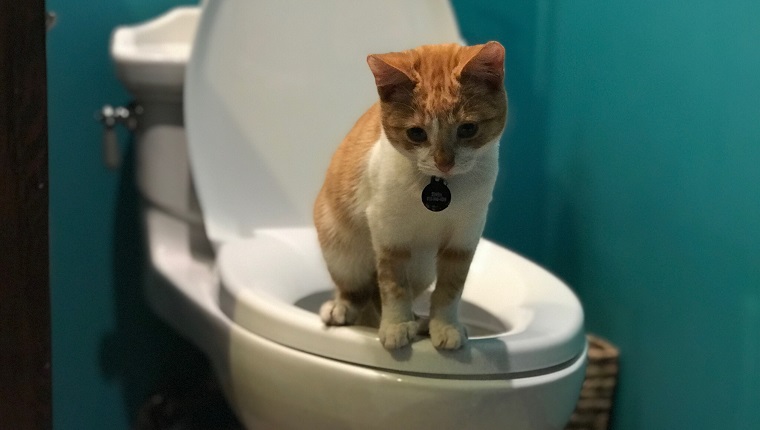The Hazards of Flushing Animal Waste Down the Toilet
The Hazards of Flushing Animal Waste Down the Toilet
Blog Article
This post directly below on the subject of 10 Things You Should Never Flush Down The Toilet is particularly insightful. Try it and draw your own findings.

When it pertains to dealing with waste, particularly animal waste, many people commonly resort to the convenient alternative of flushing it down the toilet. However, this apparently very easy service can have serious repercussions for the atmosphere and public health. In this short article, we'll explore why flushing pet waste down the commode is a poor concept and give alternate methods for appropriate disposal.
Introduction
Proper garbage disposal is essential for preserving ecological sustainability and public health. While it might seem harmless to purge animal waste down the commode, it can lead to various concerns, both for the setting and human well-being.
Risks of flushing animal waste
Environmental effect
Flushing pet waste introduces damaging microorganisms and microorganisms right into waterways, which can negatively impact aquatic ecosystems. These pathogens can infect water sources and harm marine life, disrupting delicate environments.
Public health issues
Pet waste consists of harmful bacteria such as E. coli and Salmonella, which can position major health risks to humans. Flushing pet waste down the toilet can infect water materials, causing the spread of diseases and infections.
Alternatives to flushing
As opposed to flushing animal waste down the commode, there are numerous different disposal approaches that are a lot more eco-friendly and sanitary.
Composting
Composting animal waste is an eco-friendly method to get rid of it. By composting, organic matter is broken down right into nutrient-rich soil, which can be utilized to fertilize yards and plants.
Landfill disposal
Taking care of pet waste in a land fill is an additional alternative. While not as eco-friendly as composting, it is a safer choice to flushing, as it avoids the contamination of water sources.
Family pet waste disposal systems
There are specialized family pet garbage disposal systems readily available that safely and hygienically deal with animal waste. These systems often utilize enzymes to break down waste and get rid of smells.
Actions to appropriate pet garbage disposal
To make sure appropriate disposal of animal waste, adhere to these actions:
Scooping and nabbing waste
Consistently scoop and bag pet waste utilizing biodegradable bags. This stops waste from contaminating the atmosphere.
Using marked waste containers
Dispose of bagged animal waste in designated waste bins, such as compost bins or garbage dump containers. Avoid flushing it down the bathroom whatsoever costs.
Cleaning litter boxes and family pet locations regularly
Routinely tidy litter boxes and pet locations to avoid the buildup of waste and microorganisms. Usage pet-safe cleaning products to preserve health.
Advantages of appropriate disposal methods
Adopting correct disposal techniques for animal waste provides several benefits:
Decreased environmental pollution
Correct disposal approaches reduce the danger of environmental pollution, protecting rivers and communities from contamination
Decreased threat of water contamination.
By staying clear of flushing animal waste down the toilet, the threat of water contamination is substantially lowered, securing public health.
Boosted sanitation and hygiene
Proper disposal approaches advertise far better cleanliness and hygiene, producing a much safer atmosphere for both humans and pets.
Conclusion
Finally, flushing animal waste down the commode is damaging to the atmosphere and public health. By embracing alternate disposal methods and adhering to proper waste administration techniques, we can minimize the negative influence of animal waste and contribute to a cleaner, healthier world.
What To Do With Dog Poo – The Do's And Don'ts Of Disposing Of Faeces
Dog poo bins
Some councils provide dedicated dog waste bins in popular dog-walking areas that can take dog poo that has been bagged but you can legally dispose of dog waste in any public litter bin, as long as it is securely bagged. This also applies to your wheelie bin at home.
Do not flush
Water companies do not recommend flushing dog faeces down the toilet because certain parasites can survive the water processing treatment and are potentially harmful to humans. You should also never consider flushing dog poo that has been bagged down the toilet as the bags will not break down and instead create severe blockages in the sewage system.
In the woods
The Forestry Commission promotes a ‘stick and flick’ method for dealing with waste in the woods. This means finding a stick and using it to flick any poo from off the path so that it is out of the way of other walkers. You could also bury it as long as it is not in an area where there might be livestock.
Livestock
Parasites found in dog poo can be transmitted to livestock if they inadvertently eat infected faeces that has been left on grazing land. This could result in the death of sheep or abortion in cattle so you should always make sure you pick up your dog’s waste in fields where livestock could be present.

Routinely tidy litter boxes and pet locations to avoid the buildup of waste and microorganisms. Usage pet-safe cleaning products to preserve health.
Advantages of appropriate disposal methods
Adopting correct disposal techniques for animal waste provides several benefits:
Decreased environmental pollution
Correct disposal approaches reduce the danger of environmental pollution, protecting rivers and communities from contamination
Decreased threat of water contamination.
By staying clear of flushing animal waste down the toilet, the threat of water contamination is substantially lowered, securing public health.
Boosted sanitation and hygiene
Proper disposal approaches advertise far better cleanliness and hygiene, producing a much safer atmosphere for both humans and pets.
Conclusion
Finally, flushing animal waste down the commode is damaging to the atmosphere and public health. By embracing alternate disposal methods and adhering to proper waste administration techniques, we can minimize the negative influence of animal waste and contribute to a cleaner, healthier world.
What To Do With Dog Poo – The Do's And Don'ts Of Disposing Of Faeces
Dog poo bins
Some councils provide dedicated dog waste bins in popular dog-walking areas that can take dog poo that has been bagged but you can legally dispose of dog waste in any public litter bin, as long as it is securely bagged. This also applies to your wheelie bin at home.
Do not flush
Water companies do not recommend flushing dog faeces down the toilet because certain parasites can survive the water processing treatment and are potentially harmful to humans. You should also never consider flushing dog poo that has been bagged down the toilet as the bags will not break down and instead create severe blockages in the sewage system.
In the woods
The Forestry Commission promotes a ‘stick and flick’ method for dealing with waste in the woods. This means finding a stick and using it to flick any poo from off the path so that it is out of the way of other walkers. You could also bury it as long as it is not in an area where there might be livestock.
Livestock
Parasites found in dog poo can be transmitted to livestock if they inadvertently eat infected faeces that has been left on grazing land. This could result in the death of sheep or abortion in cattle so you should always make sure you pick up your dog’s waste in fields where livestock could be present.

I stumbled upon that blog post on 4 Reasons Why Dog Poop Cleanup is Important when exploring the internet. Feel free to set aside a second to share this blog if you liked it. Thank you so much for taking the time to read it.
Order Repair Report this page